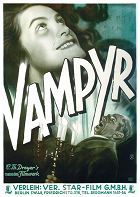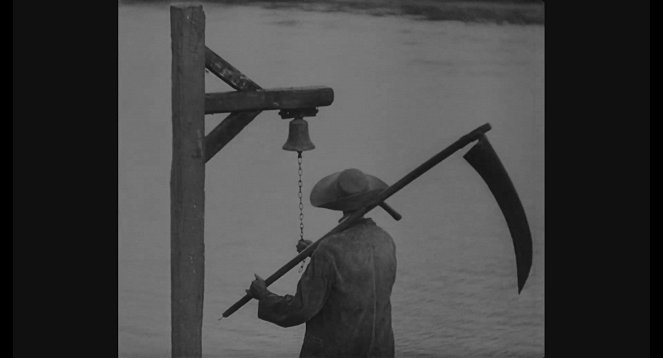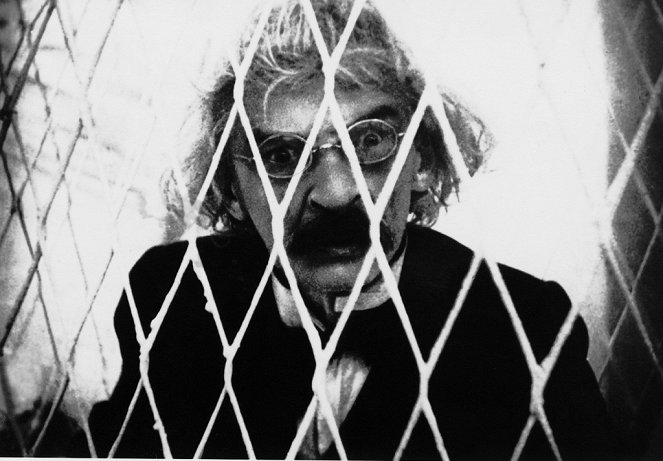Director:
Carl Theodor DreyerMúsica:
Wolfgang ZellerSinopsis(1)
A young man stops at an inn, and discovers the village is rife with strange goings-on... murders, sudden illnesses, and weird skulking creatures. Then a doctor asks him to help a desperately sick girl by donating blood, and before long, the weakened wayfarer is lost in hallucinations, imagining himself buried alive... or could it be real? (texto oficial de la distribuidora)
(más)Videos (1)
Reseñas (3)
One of the strangest films I've ever seen. Grey is not only a name, it is also the color that characterizes the film – the story is actually presented in gray, thus taking away the sharpness of expressionist shapes and creating a kind of dreamy mist. And it's a dream that this simple vampire story reminds us of the most. Rather than a real vampire, it seemed to me that the film worked with the theme of "film like a vampire," a film like a medium that sucks the "blood" of reality that can trap the viewer in an alternate reality. Some of the shots are unforgettable, as is the atmosphere that accompanies this film. It's not scary, it's not tension, it's... something close to gray, but not boring. Rather, the sedation, the magic of the subjective gaze. In the end, I was damn glad when this suggestive dream ended. A film on the edge between the mute and the sound age, and at the same time a damn ghostly revelation. If you get a chance to meet Allan Grey, don't say no.
()
It's very debatable to say definitively whether or not this early sound horror film is getting older as the years go by. Some of the narrative techniques are very original even today, and formally it’s constructed cleverly enough to cover up the lack of a thrilling plot. The play of shadows has perhaps never been so impressive in cinema, and Dreyer further triumphs with bleak, one might say dreamlike visuals, a great cast, and some atypical camera angles (for example, the journey in the coffin from the perspective of the deceased). Unfortunately, narratively, although it tries to weave several storylines or reality with mere dreams, the film is constructed in a boring way and brings almost no iconic genre moments that would be remembered by a viewer untouched by film science (like me) or without an understanding of storytelling that fundamentally uses images and associated symbols – at least I have that understanding, so I seriously considered a fourth star. 70%
()
Dreyer’s admitted intention was to shoot a film the likes of which had never been made before. I would say that he succeeded. It would be too easy and not very accurate to describe The Vampire as a horror movie. I prefer the more vague classification “unsettling film”. It is unsettling in a way similar to how the films of Luis Buñuel and David Lynch are unsettling, as they are only tenuously anchored in reality. With repeated viewing, the initial astonishment turns into admiration for the formalistic sophistication with which the unnerving effect is achieved (and which may have been the reason that Alfred Hitchcock liked the film). The shots do not logically follow each other, the cuts are subordinate to the atmosphere rather than to the logic of the narrative, the asymmetrical shot compositions and confusing, avant-garde creative directions inspired by the structure of the space force us to constantly reassess where we are and whether this is reality, fantasy or a bad dream. The difficulty of differentiating objective and subjective shots is connected with the blurred lines between the real and the fantastical. One of the techniques that Dreyer used to violate standard narrative conventions and circumvent expectations is the independence of the camera. For example, in one scene the camera creates the impression that it is moving in accordance with the protagonist’s gaze, but it soon turns out that the protagonist is at the opposite end of the room with his back turned to the camera. This logically raises the disturbing question of who is standing behind the camera at that moment and who is watching. The intense feeling of unease that the film evokes is also due to the fact that it was shot in real conditions and the sounds were recorded afterwards, which forced Dreyer to evoke the terrifying mood primarily by visual means. Thanks to that, The Vampire has aged much more slowly than the first horror movies with full sound. In fact, it seems not to have aged at all. 90%
()



Anuncio